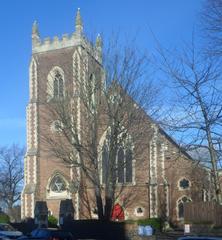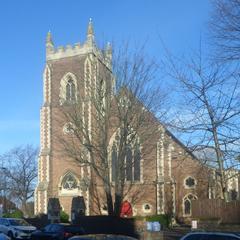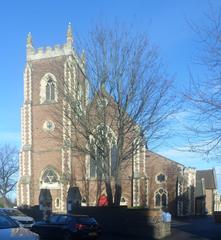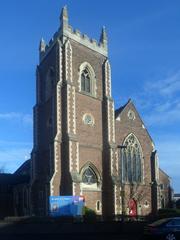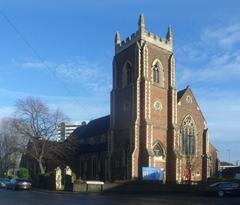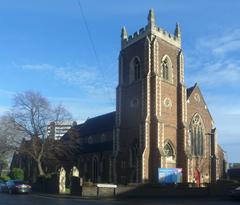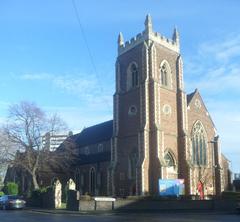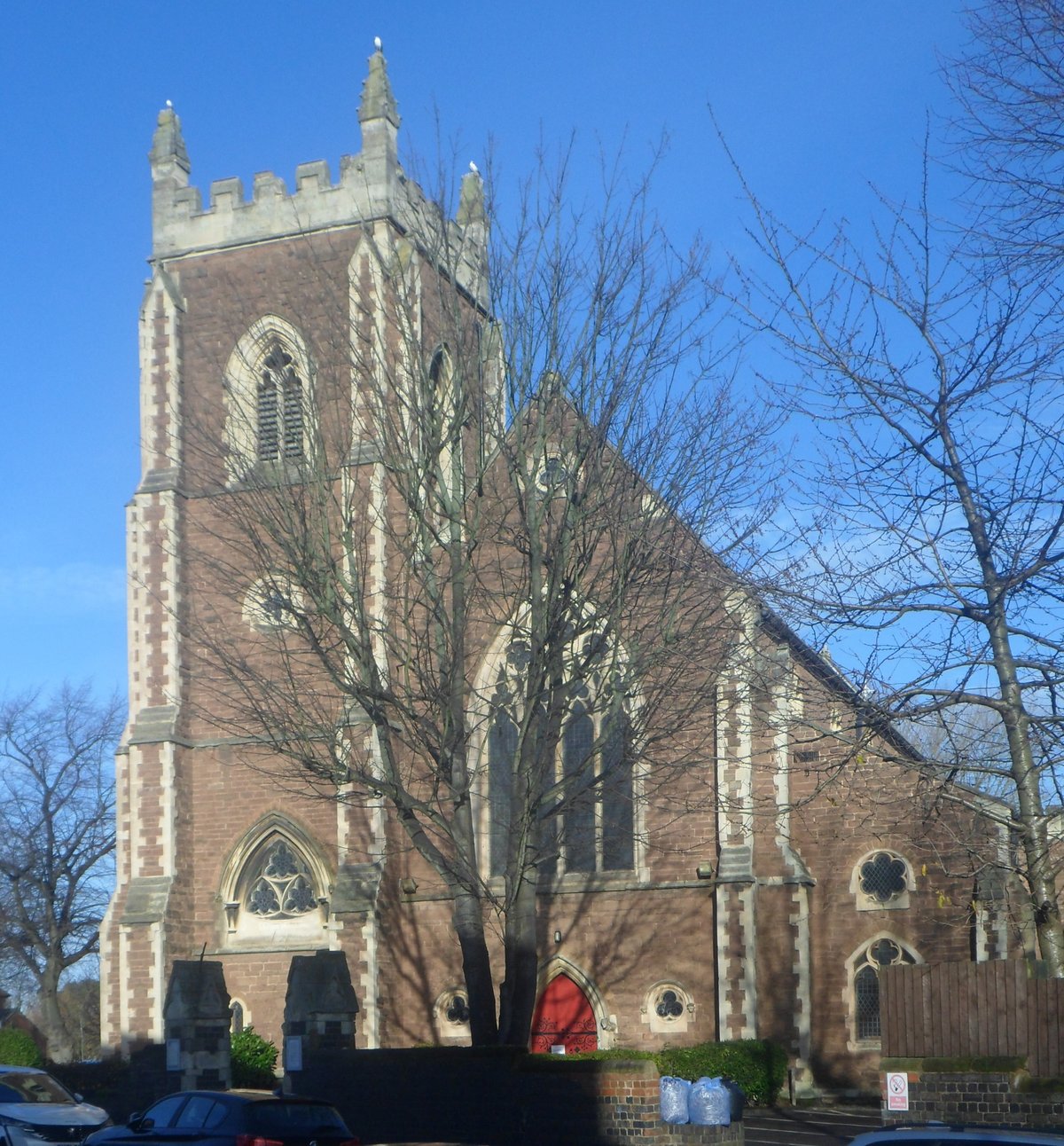
St John’s Church Birmingham: Visiting Hours, Tickets, and Historical Guide
Date: 15/06/2025
Introduction
St John’s Churches in Birmingham are more than historic landmarks—they are living testaments to the city’s rich tapestry of faith, community, and architectural evolution. From the medieval roots of St John’s in Deritend to the Victorian grandeur of Harborne and the multicultural vibrancy of Sparkhill, Perry Barr, and Ladywood, each church presents a unique insight into Birmingham’s spiritual and social development. This comprehensive guide provides everything you need: historical context, architectural highlights, visiting hours, ticketing, accessibility, and tips for making the most of your visit.
Discover how these churches have shaped and been shaped by the city, and find practical advice for planning a rewarding exploration of Birmingham’s heritage. Whether you’re a history enthusiast, architecture aficionado, or a traveler seeking community experiences, St John’s Churches are essential stops on your Birmingham itinerary.
Table of Contents
- Introduction
- Medieval Origins and Foundation
- The Guild of St John and Early Education
- Reformation and the Dissolution of the Guild
- Architectural Evolution and Key Features
- St John’s and Birmingham’s Urban Growth
- Community and Social Impact
- Essential Visiting Information: Hours, Tickets, Accessibility
- Unique Features and Photography
- Preservation Efforts and Modern Relevance
- Historical Timeline
- Visiting St John’s Perry Barr, Sparkhill, Ladywood
- St John’s Harborne: History, Visiting, and Community
- St John’s Sparkhill: Services, Community, and Local Attractions
- Frequently Asked Questions (FAQs)
- Final Visitor Recommendations
- References and Further Reading
Medieval Origins and Foundation
St John’s Church in Deritend, the oldest of its kind in Birmingham, was established circa 1380 as a “chapel of ease” for the growing population separated by the River Rea from the main parish at Aston. Supported by the Guild of St John, this chapel quickly became a focal point for both religious and social life. The church’s foundation coincided with Birmingham’s early emergence as a center of metalworking and trade, serving as both a spiritual sanctuary and a hub for community identity (Wikipedia: History of Birmingham, Local Histories: Birmingham).
The Guild of St John and Early Education
The Guild of St John, Deritend, was central to the church’s early history. As a lay religious fraternity, it not only supported the chapel but also maintained a school, highlighting the close relationship between faith and education in medieval Birmingham. The guild’s charitable and educational roles were typical of the era, blending religious devotion with social welfare (Wikipedia: History of Birmingham).
Reformation and the Dissolution of the Guild
The 16th-century Reformation brought upheaval. The Dissolution of the Monasteries led to the suppression of religious guilds and chantries, including the Guild of St John in 1547. Despite the loss of its primary patron and associated school, St John’s Chapel adapted and persisted, continuing to serve Deritend’s spiritual needs amid Birmingham’s rapid population and economic growth.
Architectural Evolution and Key Features
St John’s Church’s architecture reflects centuries of change. The original medieval structure was modest, with Gothic arches and stained glass crafted from local materials. Subsequent renovations introduced Victorian elements and expanded the church to accommodate a growing congregation. Today, visitors can admire a blend of medieval stonework, intricate carvings, and vibrant stained glass—features that make the church a rewarding destination for both photographers and history lovers (Local Histories: Birmingham).
St John’s and Birmingham’s Urban Growth
As Birmingham grew from a market town to a major city, St John’s remained an anchor for evolving communities. By the 17th century, the city became known for religious nonconformity and independent thought, with St John’s hosting lectureships and gatherings that reflected this progressive spirit (Wikipedia: History of Birmingham).
Community and Social Impact
St John’s Churches have long been centers for worship, education, and charity. From hosting medieval fairs to supporting the poor and sick, their impact extends beyond religion into the fabric of Birmingham’s social life. The tradition of community service continues today, with churches providing outreach programs, educational activities, and spaces for cultural exchange (Local Histories: Birmingham).
Essential Visiting Information: Hours, Tickets, Accessibility
St John’s Church Deritend:
- Hours: Tuesday–Saturday, 10:00 AM–4:00 PM. Closed Sundays and Mondays except for special services.
- Tickets: Free entry; donations welcome.
- Guided Tours: Available by request and on heritage event days.
- Accessibility: Wheelchair access, ramps, accessible restrooms, and assistance on request.
- Getting There: Easily accessible via public transport; parking available in nearby car parks.
- Nearby Attractions: Birmingham Back to Backs, Custard Factory, historic Digbeth.
Unique Features and Photography
Highlights include medieval and Victorian stained glass, original stonework, and historic memorials. The churchyard offers classic English churchyard vistas, and the interplay of light through stained glass is especially striking in the afternoon.
Preservation Efforts and Modern Relevance
Today, St John’s Churches are recognized heritage assets. Ongoing preservation ensures their continued relevance as both historical sites and vibrant centers for worship and community. Their resilience and adaptability echo Birmingham’s broader narrative of transformation and inclusivity (Wikipedia: History of Birmingham).
Historical Timeline
- c. 1380: St John’s Chapel founded in Deritend.
- 1392: Guild of St John established, supporting the chapel and a school.
- 1547: Dissolution of the Guild and closure of the school during the Reformation.
- 17th–18th centuries: Architectural expansion and enhancements.
- 19th–21st centuries: Continued adaptation and preservation amid urban modernization.
Visiting St John’s Perry Barr, Sparkhill, and Ladywood
Overview
St John’s Churches in Perry Barr (sjpb.org.uk), Sparkhill (stjohnsparkhill.org.uk), and Ladywood (stjohnpeter.org.uk) are focal points for worship and community, each reflecting Birmingham’s super-diverse population.
Visitor Information
- Hours: Generally 9:00 AM–6:00 PM on weekdays, with extended Sunday hours. Check individual church websites for specifics.
- Entry: Free; donations encouraged.
- Guided Tours: Available during heritage events; contact churches for details.
- Accessibility: Ramps, accessible seating, and facilities are standard.
- Travel: Served by public transport; limited on-site parking with additional public options nearby.
Community and Cultural Life
- Perry Barr: Community groups and support programs (sjpb.org.uk).
- Sparkhill: Home to award-winning Narthex charity and environmental initiatives (stjohnsparkhill.org.uk).
- Ladywood: Focus on intercultural and intergenerational ministry (stjohnpeter.org.uk).
Festivals and Inclusivity
Services range from traditional to contemporary, embracing Birmingham’s multi-ethnic character. Regular festivals, communal meals, and safeguarding policies ensure a safe, welcoming environment.
Nearby Attractions
Explore the Botanical Gardens, Jewellery Quarter, and city center venues on your visit.
St John’s Harborne: History, Visiting, and Community
Historical and Architectural Background
Founded in 1856, St John’s Harborne exemplifies Victorian Gothic Revival design, with a soaring spire and detailed stonework (St John’s Harborne). The church’s stained glass and woodwork are highlights, especially during daylight hours.
Visiting Information
- Service Times: Sunday at 10:00 AM and 6:00 PM; midweek gatherings and streamed services also available.
- Entry: Free, with donations appreciated.
- Guided Tours: Occasionally during heritage events—check the church calendar (St John’s Calendar).
- Accessibility: Step-free access, accessible restrooms, limited on-site parking.
- Facilities: Baby changing, hearing loop, children’s areas.
- Contact: St John’s Church, High Street, Harborne, Birmingham, B17 9PT; Contact page.
Community Life
The church is known for its inclusive ethos, youth and family ministry, outreach programs, and international partnerships.
Local Attractions
Nearby, explore the Birmingham Botanical Gardens, Museum & Art Gallery, and St Philip’s Cathedral.
St John’s Sparkhill: Services, Community, and Local Attractions
Overview
St John’s Sparkhill is a Grade II listed Victorian church, serving one of England’s most ethnically diverse parishes. It hosts multiple congregations, including Armenian and Persian-speaking groups, and partners with the Narthex charity (Narthex).
Visiting and Accessibility
- Hours: Open during service times and community events; main Sunday service at 10:30 AM.
- Entry: Free; some events may require tickets or donations.
- Facilities: Spacious interior, standard amenities, refreshments after services.
- Accessibility: Some limitations due to historic structure; consult AccessAble.
- Contact: St John’s Church, Sparkhill; Birmingham City Council directory.
Community and Volunteering
Narthex Sparkhill provides award-winning social support. The church is an ecumenical hub, with opportunities for volunteering and community engagement.
Local Attractions
The church is situated in the Balti Triangle, renowned for South Asian cuisine, and is close to Sparkhill Park and other religious sites.
Frequently Asked Questions (FAQs)
Q: What are the visiting hours for St John’s Churches in Birmingham?
A: Hours vary by location, generally 9:00 AM–6:00 PM weekdays, with extended Sunday hours. Deritend is open Tuesday–Saturday, 10:00 AM–4:00 PM.
Q: Is there an entry fee or are tickets required?
A: Entry is free at all locations; donations are encouraged.
Q: Are guided tours available?
A: Yes, by arrangement or during heritage events. Contact the church or check their website for schedules.
Q: Are the churches accessible for people with disabilities?
A: All strive for accessibility, with ramps and adapted facilities. Some historic sites may have partial limitations—check ahead for specifics.
Q: Can visitors attend special services or festivals?
A: Yes, all are welcome at regular and festival services.
Q: What nearby attractions can I visit?
A: Options include Birmingham Back to Backs, Custard Factory, Botanical Gardens, Jewellery Quarter, and more.
Final Visitor Recommendations
St John’s Churches across Birmingham collectively showcase the city’s layered history, architectural beauty, and communal resilience. From medieval Deritend to the multicultural energy of Sparkhill and the Victorian elegance of Harborne, each church tells a story of adaptation and inclusivity. Visitors can expect free admission, accessible facilities, and opportunities for guided tours and community involvement.
To deepen your experience, explore official church websites for real-time information and connect with local outreach initiatives. Enhance your trip by visiting nearby attractions and engaging with Birmingham’s vibrant neighborhoods. For ongoing updates and immersive cultural content, follow church social media channels and download the Audiala app.
Your exploration of Birmingham’s religious, architectural, and community heritage begins with the St John’s Churches—an invitation to discover history in the heart of a modern, diverse city.
